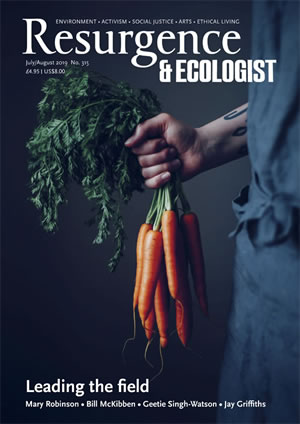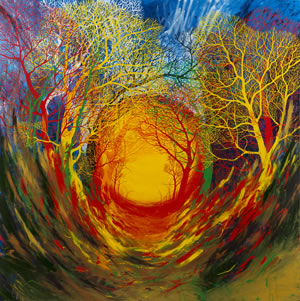“Looking deep into the strata helps us to see ourselves more clearly, and to ask the question, ‘Are we being good good ancestors?’ ”
This is as much a book about the legacy of the modern era, known as the Anthropocene, as about the ancient strata, myths and catacombs of the underland. In prose both breathtakingly lyrical and brutally honest, the author uncovers the layers of meaning beneath our feet and what we are currently laying down for future generations to uncover. In a journey from the Mendips of Somerset, through the mines and forests of the UK, on to the invisible city of Paris and the starless rivers of Italy and thence to the far northern reaches of Norway and Greenland, Robert Macfarlane (often really bravely) descends into the darkness in search of knowledge. As he points out, our common verb ‘to understand’ bears a sense of passing beneath something to fully comprehend it.
Our myths and legends echo with ‘descent’ stories – Dante and Virgil, Persephone and Demeter, Eurydice and Orpheus, Ariadne, Theseus and the Minotaur – and a long cultural history of abhorrence exists regarding underground spaces. Claustrophobia, that most prevalent of all phobias, is evoked within them – and, it has to be said, when reading this book. When the author describes traversing a particularly narrow passageway in the Parisian catacombs, my whole being was willing him to run, to get out of there and ascend to the light. Macfarlane states, “I have rarely felt as far from the human realm as when only ten yards below it,” and neither has the reader.
Deep time is the chronology of the underland – epochs and aeons – yet modern time like a ‘dark force’ is eroding and exposing the secrets of the earth. Into the underland we have long placed that which we fear and wish to lose, and that which we love and wish to save, because the underland keeps its secrets well. That is, until the Anthropocene, when things that should have stayed hidden are rising up, unbidden: in the Arctic, ancient methane deposits, anthrax and smallpox are leaking through holes in the permafrost; Alpine and Himalayan glaciers are yielding bodies engulfed by their ice decades before; cold war missile bases and chemical stores are revealed as the ice retreats. When we see these surfacings, we look away, “seized by the obscenity of the intrusions”, by the short-sightedness of our actions.
In his description of stone, Macfarlane encapsulates the passage of deep time perfectly: “We tend to imagine stone as inert matter, obdurate in its fixity. But here in this rift it feels instead like a liquid briefly paused in its flow. Seen in deep time, stone folds as strata, gouts as lava, floats as plates, shifts as shingle. Over aeons, rock absorbs, transforms, levitates from seabed to summit.” Salt, too, flows over time. It creeps around, it sags and distorts. In the salt and potash mines of Boulby, Yorkshire, the author bounces around in the cab of a Transit van to the mine face, many miles under the North Sea. His driver grins at him and says, “We’re out beyond the shipping lane now. Imagine those captains in charge of their boats, with never a clue we’re careering about below them!” Indeed, we know so little of the underland.
What fascinated me most about Macfarlane’s trip undersea was his description of the giant, lizard-like machine that clawed at the seam of potash with its dragon teeth, depositing rock into waiting hoppers at its rear. The network of tunnels left behind reminds him of termite mounds. It is too expensive to haul the lizard-machine to the surface once its useful life is over, and so it is left in the tunnels to be slowly compressed and distorted by flowing salt and deep time. “What a signature our species will leave in the strata!” Macfarlane exclaims, imagining future intelligent beings finding the machine and thinking it animal. With great insight, he writes, “Perhaps above all, the Anthropocene compels us to think forwards in deep time, and to weigh what we will leave behind, as the landscapes we are making now will sink into the strata becoming the underlands.”
This review can only touch the surface of the depth and insights of this compelling book. Learning about the ‘wood-wide-web’ and the communities of mycorrhizal fungi in forests has changed forever how I see trees, and indeed, how I will garden, and Macfarlane’s descent into the ice-blue of a ‘moulin’, a vertical ice-cave made from glacial meltwater, was almost unreadable, so nervous was I on his behalf; but in the end, what Underland bestows upon the reader is an awareness of deep time, so that at best it might “help us to see ourselves as part of a web of gift, inheritance and legacy stretching over millions of years past and millions to come, leaving us to consider what we are leaving behind for the epochs and beings that will follow us.”







